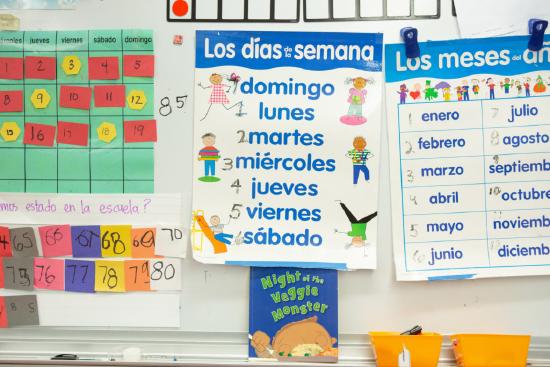1.8: Cultural Frameworks
- Page ID
- 129780
Cultural Frameworks
There are frameworks that look at diverse cultural interactions resulting in the formation of values, behaviors, and skills as asset. These frameworks include Funds of Knowledge, Community Cultural Wealth and Cultural Capital.
Cultural Capital
Pierre Bourdieu's (1930-2002) theory of cultural capital or “the cultural knowledge that serves as currency that helps us navigate culture and alters our experiences and the opportunities available to us.”
Cultural Wealth

Yosso (2005) describes cultural wealth as “an array of cultural knowledge, skills, abilities and contacts possessed by marginalized group that is often unrecognized and unacknowledged”, countering the cultural deficit model which focuses on deficiencies in the home life of children.
Yosso’s six forms of cultural capital are:
- Aspirational- children develop social emotional perseverance despite educational inequities
- Linguistic- children develop language and communication skills as dual language and dialectical learners
- Familial- children develop a sense of community history and memory
- Social- children draw from personal human resources within family and community
- Navigational- children develop the ability to get needs met in unresponsive environments
- Resistance- children develop the knowledge and skills to challenge inequality
Funds of Knowledge
Funds of Knowledge is a similar concept in early childhood from Velez- Ibanez and Greenberg (1992) made popular by Gonzales, Moll, and Amanti (2005). This is the idea that information learned in the home and family is knowledge that stays with children their whole lives. Funds of knowledge are the historically accumulated and culturally developed skills essential for an household, community, and individual to function well. Funds of knowledge help explain how culture shapes each child's skills, behaviors, and abilities. For children funds of knowledge can be built from:
- Family occupations
- Family activities
- Home language
- Family outings
- Household chores
- Caregiving experiences
- Entertainment
Funds of knowledge encompass families’ traditions, experiences, information, and practices. When educators and supportive adults establish a relationship founded on the common goal of successful and healthy development of the child, it supports the aims of cultural responsiveness, equity, and inclusion. For example, when a child shares their enthusiasm for a television program their family is watching together, it draws upon many of the child’s own funds of knowledge. While the child is drawing on a shared family and cultural experience in the show itself, the child is also engaging with notions of occupations and outings, values, chores and activities and vocabulary. A child’s experience shopping at the grocery story is another example of funds of knowledge. A child may learn about quantity, money, shopping practices, cultural norms around food, and patterns of interacting, all while learning and practicing signs and symbols. Drawing on socio-cultural perspectives, educators embrace the funds of knowledge children possess utilizing these resources and skills to build productive pedagogy. In this way, educators acknowledge that every child comes to school with previous experiences that influence their interactions with language and support their emerging knowledge base.
The home environment of each family is complex and personal, and includes economic, social, and cultural influences. The complexity of home and community environments explains the diversity we see amongst school readiness nationwide. Using the Funds of Knowledge teachers can be seen as anthropologist investigating a child's knowledge base that originated in their home and community. Teachers can then design educational experience that pull from overlooked funds of knowledge to ensure culturally relevant learning experiences that honors a child's culture as opposed to focusing on what the child does not know leading to stereotypical and deficit thinking of the child.
References
Bourdieu, Pierre, 1930-2002. (1991). Language and Symbolic Power. Cambridge, Mass. :Harvard University Press,
Gilligan, C. (1982). In a different voice: Psychological theory and women's psychological development. Harvard University Press.
González, N., Moll, L.C., & Amanti, C.. (2005). Funds of knowledge: Theorizing practices in households, communities, and classrooms. Mahwah, NJ: Lawrence Erlbaum
Harper-Scott, J. P. E., & Samson, J. (2009). An introduction to music studies. Cambridge, UK: Cambridge University Press.
Reay, Diane. (2004). 'It's all becoming a habitus': Beyond the habitual use of habitus in educational research. British Journal of Sociology of Education - BRIT J SOCIOL EDUC. 25. 431-444. 10.1080/0142569042000236934.
Schull, C. P., La Croix, L., Miller, S. E., Austin, K. S., Kidd, J. K. (2021, August 8). Early Childhood Literacy: Engaging and Empowering Emergent Readers and Writers, Birth – Age 5. The Virtual Library of Virginia.
Vélez-Ibáñez, C.G., & Greenberg, J.B. (1992). Formation and transformation of funds of knowledge among U.S. Mexican households. Anthropology & Education Quarterly, 23(4), 313-335.
Waterston T., Alperstein G., & Stewart S. (2004) Social capital: a key factor in child health inequalities Archives of Disease in Childhood, 89, 456-459.
Yosso, T.J (2005) Whose Culture has Capital? A Critical race Theory Discussion of Community Cultural wealth race and Ethnicity and Education. 8(1). 69-91.

